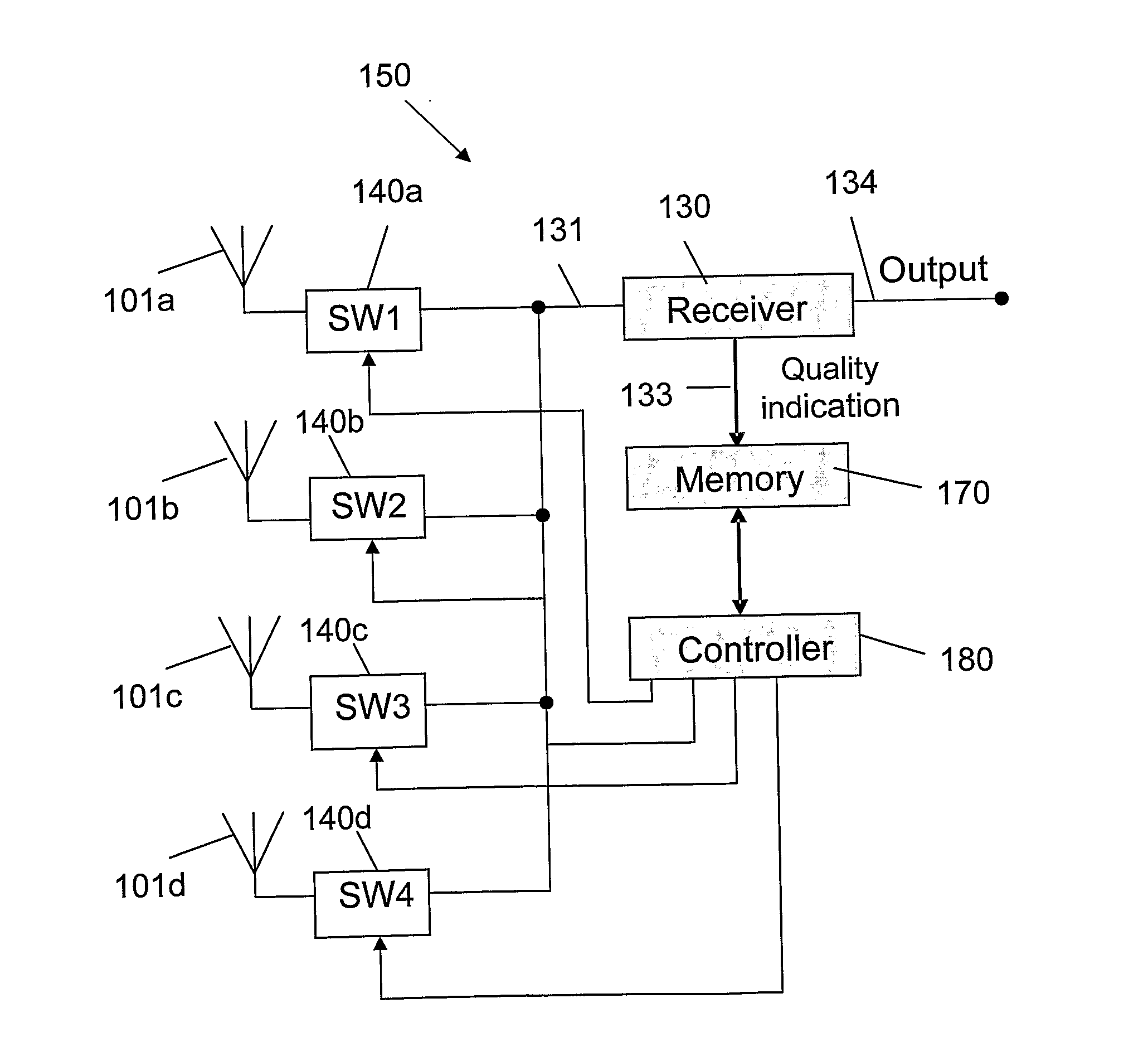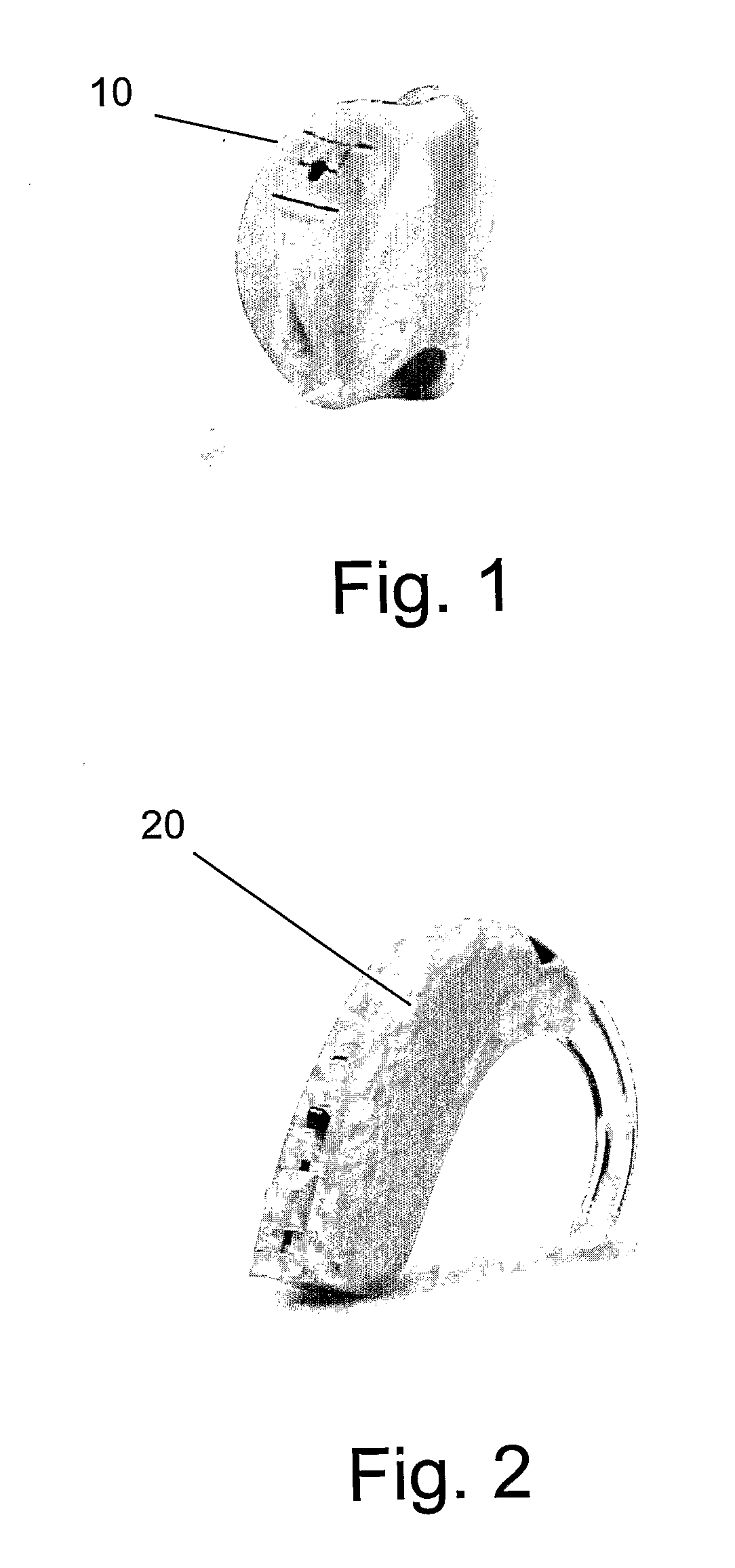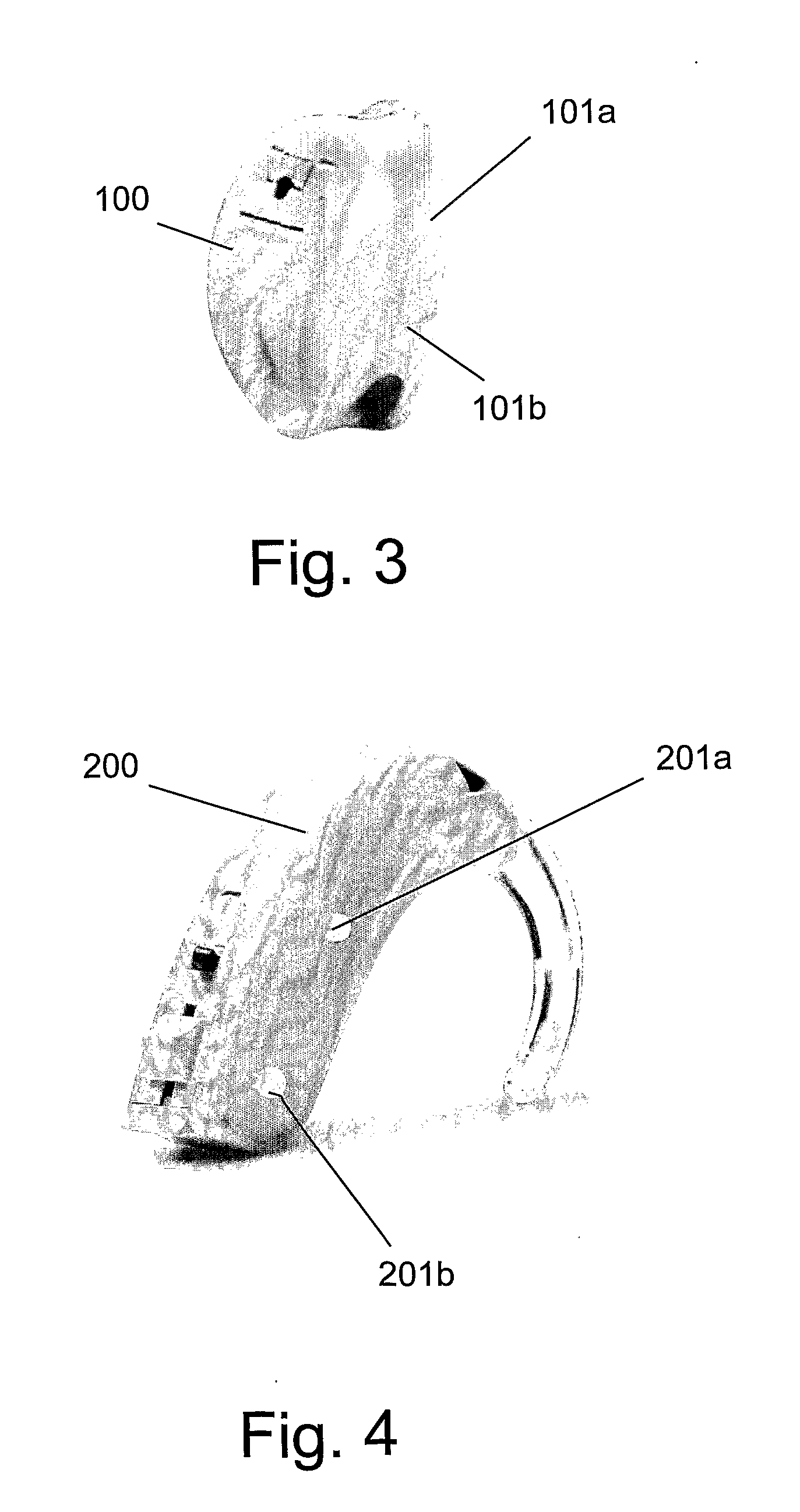Antenna Arrangement for a Hearing Instrument
a technology for hearing instruments and antennas, applied in antennas, transmission, electrical devices, etc., can solve the problems of poor performance, noise, short communication range, and users' listening situations being more difficult than others to achieve listening,
- Summary
- Abstract
- Description
- Claims
- Application Information
AI Technical Summary
Benefits of technology
Problems solved by technology
Method used
Image
Examples
Embodiment Construction
FIG. 1 illustrates a typical In-The-Ear (ITE) type hearing aid 10 of the prior art. FIG. 2 similarly illustrates a Behind-The-Ear (BTE) type hearing aid 20 of the prior art.
As mentioned, the small size of hearing aids, especially those placed within the ear, prevents incorporating high-quality FM communication capability within them, since such capability requires an antenna which is substantially larger than the size of the hearing aid itself and the need to accommodate for continuous changes in orientation of the hearing aid relative to the transmitter.
The present invention enables the incorporation of high quality RF communication, in all types of hearing aids. More specifically, the invention provides a mechanism and an improved structure for a hearing aid, which improves the device communication quality, while meeting all the requirements and limitations relating to the size, structure, and location of device.
FIG. 3 shows an ITE type hearing aid 100, according to an embodiment ...
PUM
 Login to View More
Login to View More Abstract
Description
Claims
Application Information
 Login to View More
Login to View More - R&D
- Intellectual Property
- Life Sciences
- Materials
- Tech Scout
- Unparalleled Data Quality
- Higher Quality Content
- 60% Fewer Hallucinations
Browse by: Latest US Patents, China's latest patents, Technical Efficacy Thesaurus, Application Domain, Technology Topic, Popular Technical Reports.
© 2025 PatSnap. All rights reserved.Legal|Privacy policy|Modern Slavery Act Transparency Statement|Sitemap|About US| Contact US: help@patsnap.com



